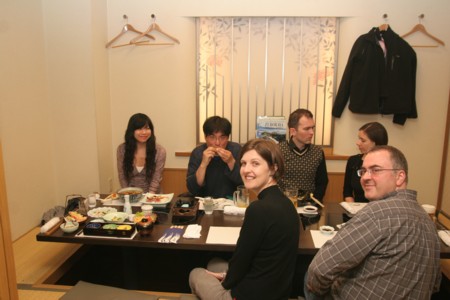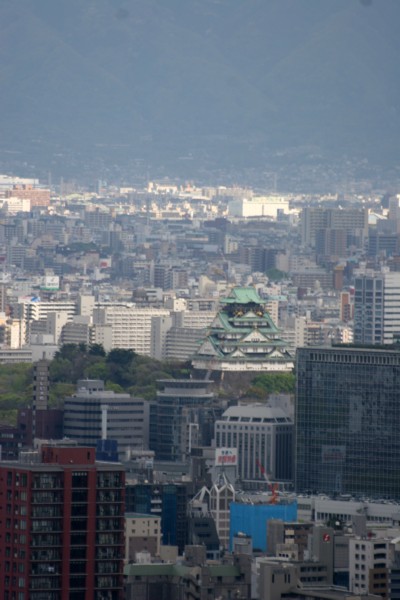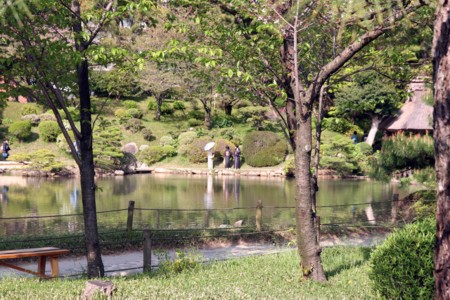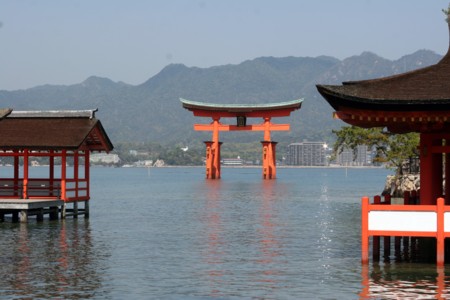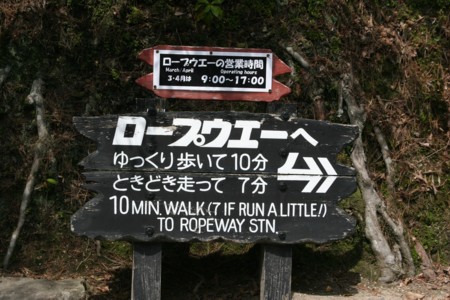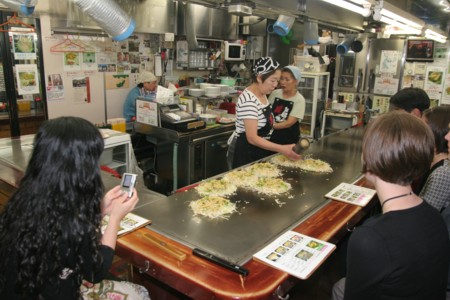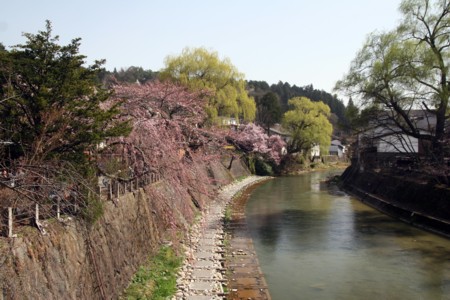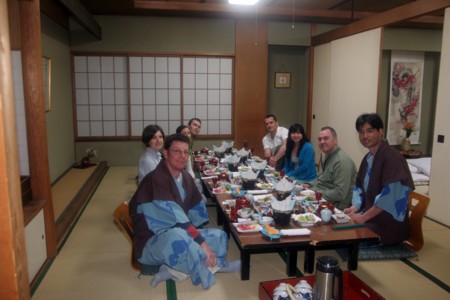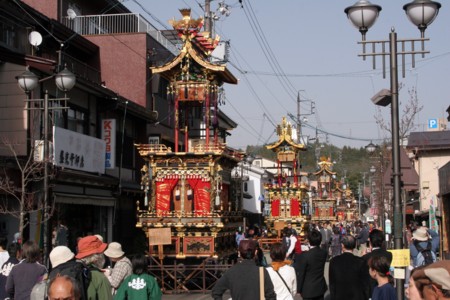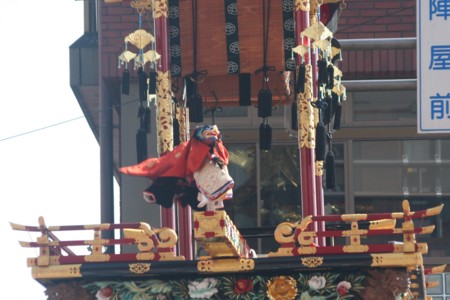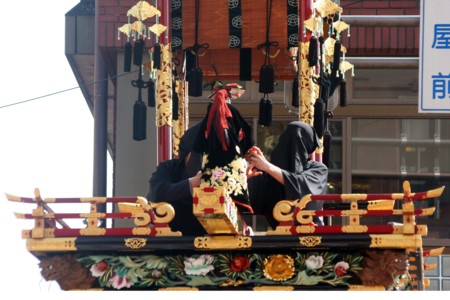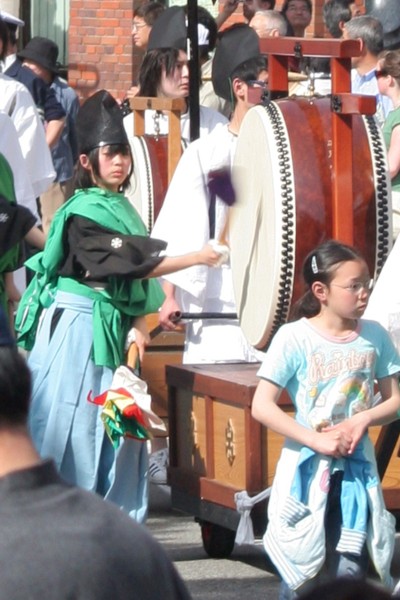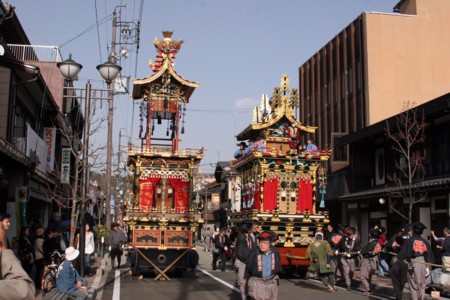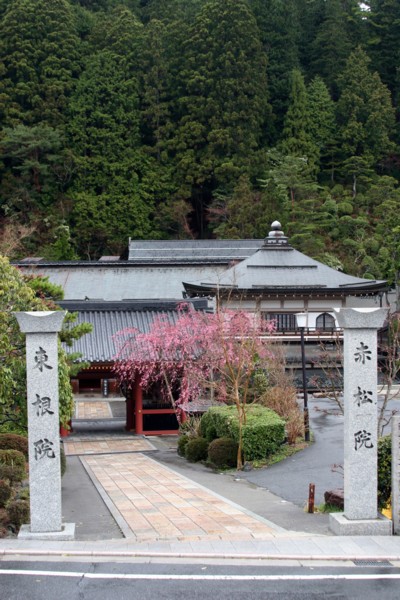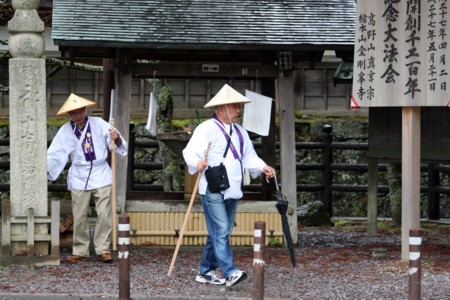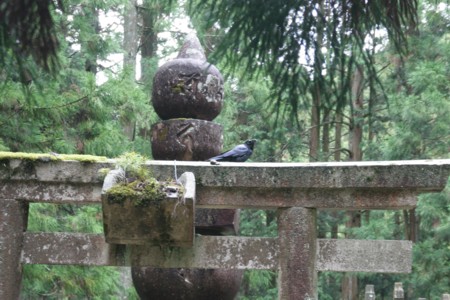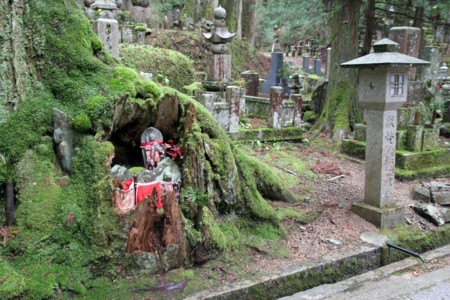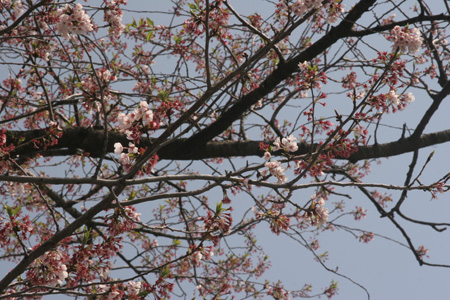When I went to Japan in 2008, I was very disappointed to arrive just too late for the “Cherry Blossoms”. It was a matter of days, but a very heavy rain storm two days before my arrival in Tokyo had made sure that there was not much left.
That and the fact that Jon and Mary had recently moved to Tokyo gave me enough reasons to spend a long week end there right after my return from Belgium.
I was much luckier this time, even if the “Peak” of the cherry blossoms was the week-end before. We went to Ueno Park – one of ‘the’ places for this activity. Since this was Friday and not a holiday in Japan, the place was not very crowded.
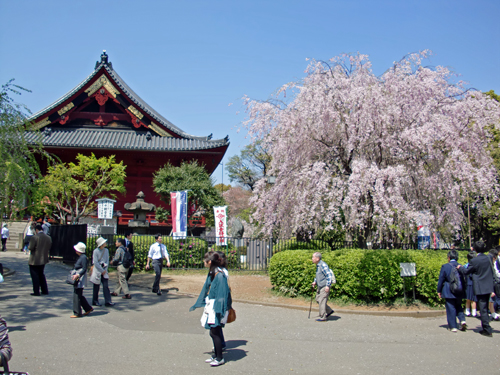
Still there were people around, just enjoying the spectacle and also looking at the passer-bys.
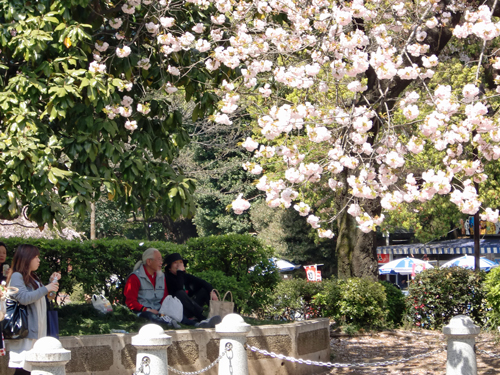
Ueno is a beautiful park that would be quite interesting enough even without the cherry blossoms. There are statues of local heroes
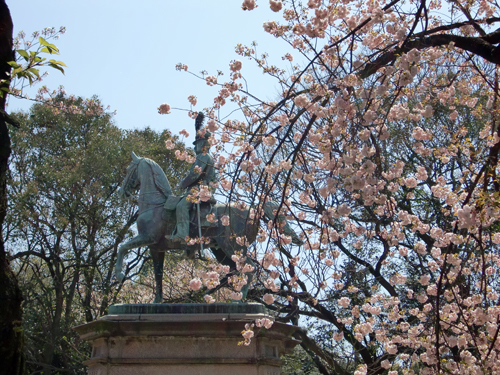
and a lake surrounded by cherry trees and surrounded further by large apartment buildings – a little like Central Park in New York – I felt the same atmosphere here.
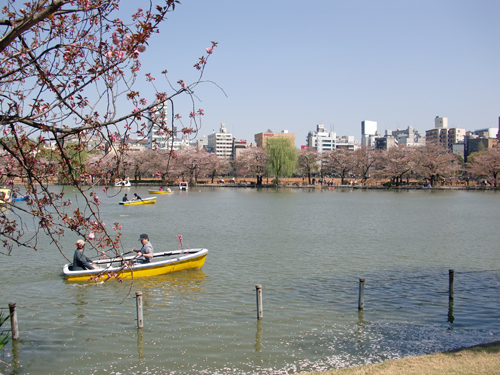
We went a little further and walked along a moat, surrounded by cherry trees. Here as well, it is not at the peak, but I can just imagine what it can be like when all the trees are still in full bloom. There are even view points set up where you can get the best view

Cherry petals were falling in the breeze, at time, they could be mistaken for snow flakes. In this particular area, the wind was pushing all the petals in the one corner of the moat, turning the water pink – ideal place for a romantic trip on a row boat
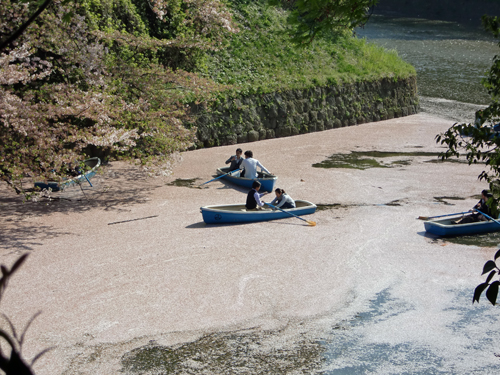
Since I had arrived that morning after flying overnight, we called it a day early and went exploring for ‘shabu-shabu’. We found a restaurant that was recommended right around the corner. Based on the map, it was right across from the US Embassy. When we get to the street and the place where the “X” should be, there is nothing. Jon finally found the way (I believe the back way) by going through a car park and down stairs – there were 4 restaurants, including Shabusen. Food was excellent. We relaxed back at their apartment, enjoying the great view.

The next day, we decided to go on a ‘rail trip’ and selected Kamakura based on the guide’s descriptions and the fact that it was only a 1 hour journey from Tokyo.
We took a subway than a train, than a tourist train and started at the Hase Dera. There are perfectly manicured gardens as always in Japan
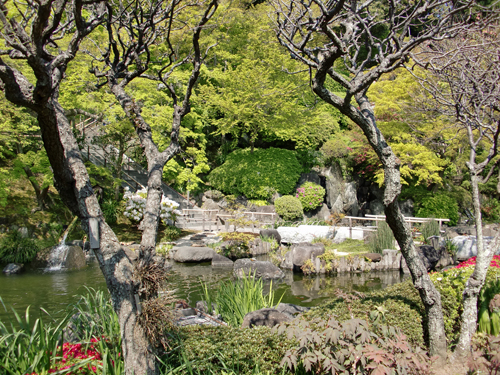
The main temple buildings are surrounded by cherry trees and are peaceful – it is still early and the main throng of tourists have not yet arrived.
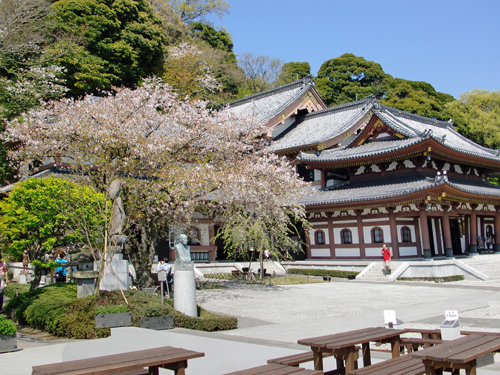
Here is a good example of cherry blossom snow
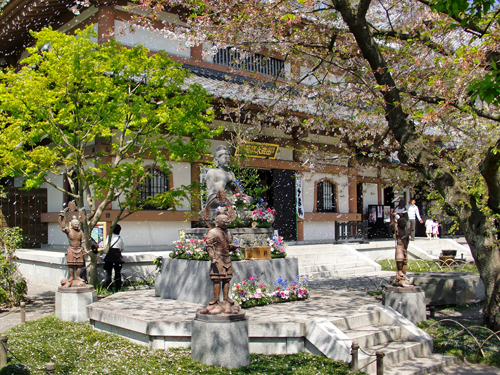
The garden had several of statues of Jizo, the patron saint of the souls of departed children. An army of small urchins is supposed to be left there to honour children lost in miscarriages or abortions.
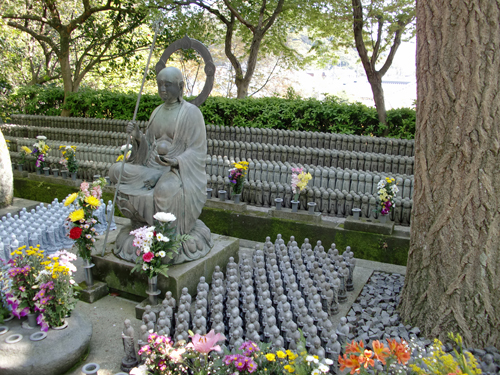
I really liked this statue, not more than 1m high
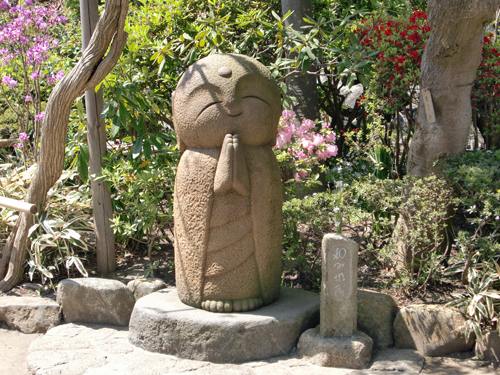
We had Okonomiya for lunch – we even had to cook them ourselves even though the waiter took pity on us and helped us to get started.
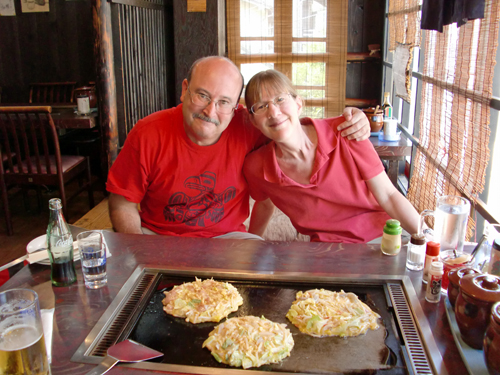
and than walked to one of the main attractions in Kamakura: the Daibutsu – an 11.4 m tall sitting Buddha completed in 1252
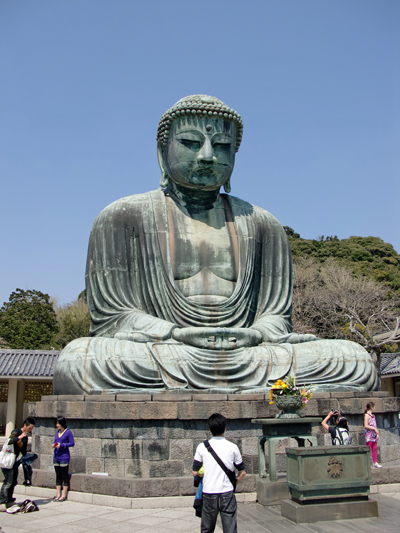
We took the bus back to the main train station – you have to remember than taking any public transport in Japan is always an adventure as none of the instructions are written in English, or in any characters that we could understand. Fortunately, we had instruction in the brochure we had picked up at the train station; what they said was we needed to pick up a ticket on the way in, than a board would show how much we owed at each stop. We needed top pay the driver on the way out – as it turned out, the Tokyo subway card worked here too, so we had no problems. Last on the agenda for the day was the main temple complex of Tsurugaoka. There is already more of a crowd in the streets as we make our way down the pedestrian street. There are also more people entering the temple compound

There is a traditional wedding ceremony in the small temple at the bottom of the hill on the picture above
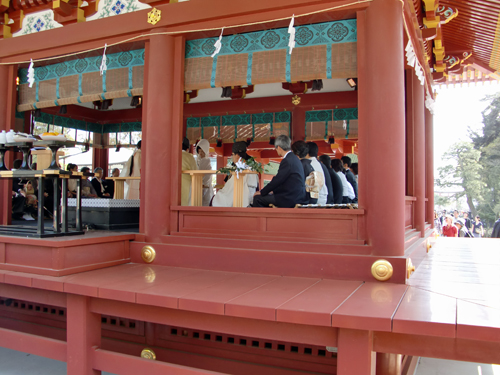
The bride a groom are reciting their vows (I think – I am not very familiar with this – this may be the marriage contract he is carefully reading or just a poem that he wrote the night before…)

Needless to say they are attracting a crowd – they should have anticipated this…

Jon was not very successful feeding chocolate biscuit to the pigeons … it seemed to work with fish, but here the birds are definitely skeptical.

The people who had real food did a lot better.

Exploring Japan is always a discovery of new ways to spell Engrish – I certainly do not mean to be critical, just amused. And I thank each and every person who tries to help us with a few Engrish sentences. This board in front of an Italian restaurant is a typical example.

I can understand most of what they are trying to say except for the part about small calamari and rape. I am intrigued by the Italian style Bouillabaisse – a typical dish from Provence!
We did not stop at this establishment.
On Sunday, we explored a modern museum in Roppongi, with an excellent exhibition – I did not get all of the art pieces, but some did look quite difficult to do… Later, we went to a concert by Blue Man Group and had a late lunch at a local Thai restaurant.
It was then time for me to go. I took the subway from Mary and Jon’s apartment and had to change at the next stop. I discovered that the walk from one platform to the next is quite long, and I did not have a whole lot of time. I hurried and saw a train just arriving as I was approaching the platform. Feeling lucky, I jumped into it, only to discover that is was going in the wrong direction. I switched trains at the next station and made it to my next destination – Tokyo Station – with only 5 minutes to find the train to Narita Airport. Fortunately my traveller instincts and vague memories of having done this before kicked in and I was in my reserved seat with 3 whole minutes to spare before the train left. My passage through Narita was more sedate and I settled early in my plane seat ready for the excellent Singapore Airline service on the return trip to Singapore.
It was a very nice week-end.
(785 Page Views)



